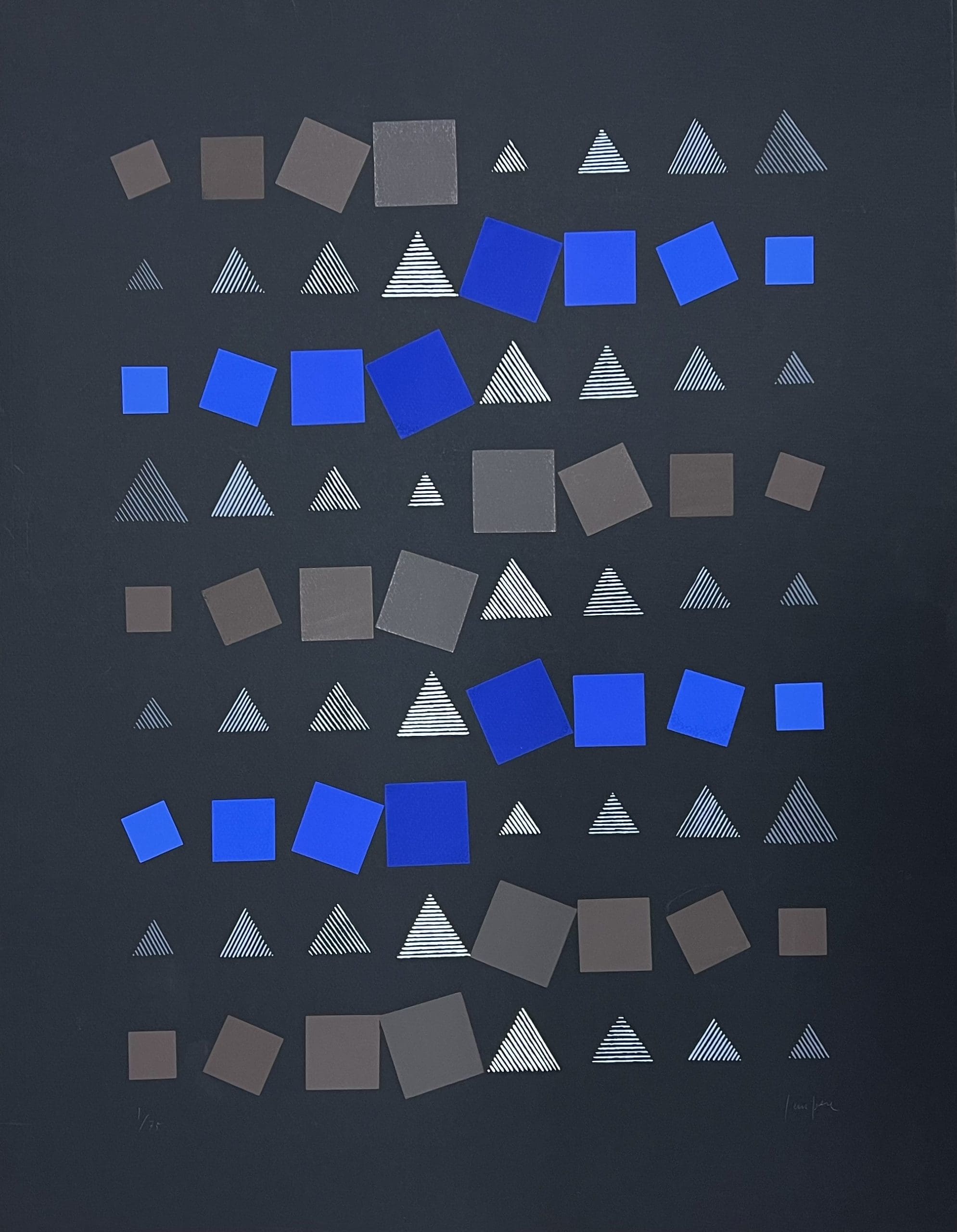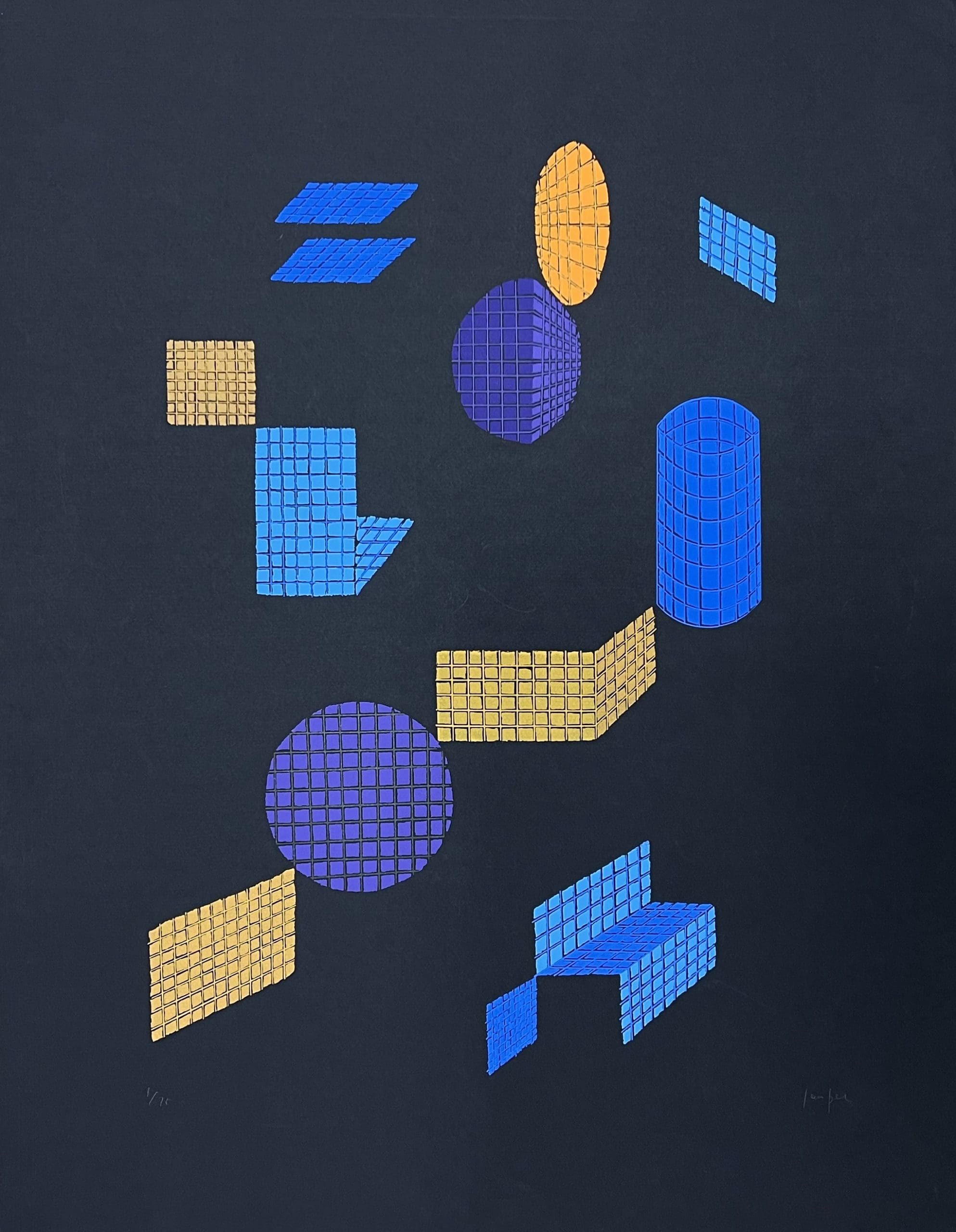Eusebio Sempere
Eusebio Sempere Juan (3 April 1923 – 10 April 1985) was a Spanish sculptor, painter and graphic artist whose abstract geometric works make him the most representative artist of the Kinetic art movement in Spain and one of Spain’s foremost artists. His use of repetition of line and mastery of color to manipulate the way light plays on the surface give depth to his pictorial compositions.
Sempere was born in Onil, Alicante, Spain. He began his studies at the Real Academia de Bellas Artes de San Carlos de Valencia (Saint Charles Royal Academy of Fine Arts of Valencia) where he studied painting, drawing and various etching techniques. Due to a childhood disease he had almost no vision in his right eye.
In 1948 Sempere went to study in Paris, where he met Palazuelo and Chillida and other avant-garde artists such as Kandinsky and Klee. Here he came under the influence of Braque, and improved the screen printing technique he used frequently in later years. In 1955, his work was noticed by art critics at the Denise Rene Gallery and in 1956 he showed two works at the Salon des Réalités Nouvelles in Paris. In this period he was greatly impressed by Vasarely’s theories of kinetic art. In Paris he also met Jean Arp and was friends with Nina Kandinsky, the painter’s widow, and Roberta González, the daughter of sculptor Julio González. In 1957 he made the acquaintance of Martin Abel who worked with him years later to produce limited editions of his serigraphs.
Returning to Spain in 1959, he moved to Valencia, where art critic Aguilera Cerní, editor of Arte vivo (The Living Art) magazine, introduced Sempere to the Group Parpalló, a cultural movement not limited to the visual arts. Formed in 1957, it included artists such as Castellano, Genovés, Navarro, Soria, Michavila, Andres Alfaro, Manolo Gil, Amadeo Gabino, Isidoro Balaguer, and others striving to renew the cultural landscape in Valencia. The group published a magazine, called at first Arte vivo and later Parpalló, and began group exhibitions.
In 1964, Sempere was granted a Ford Foundation fellowship which allowed him to travel to the United States and put on an exhibition at the Bertha Schaefer Gallery, and to show his work in the Spanish Pavilion at the World’s Fair in New York. In 1968 Sempere participated in a seminar at the Computer Centre of the Complutense University of Madrid on “Automatic generation of plastic forms” where he created works using computers. In 1969, he traveled again to the United States on a fellowship and there used a computer to create original art, a technique that he would continue to experiment with on his return to the University of Madrid, where he became a pioneer of this innovation in Spain.
Still exhibiting regularly at the Denise Rene Gallery in Paris, he participated in some notable public projects; the best-known examples are the sculptures and carved railings at the Museo Esculturas al Aire Libre (Museum of Outdoor Sculpture) in Madrid. Sempere persuaded his artist friends, including Pablo Serrano, Miró, and Chillida, to donate their work, much of which is spectacular, especially his own cascade that forms a centerpiece of the assembly. Sempere’s work in the gardens of the Fundación Juan March (Juan March Foundation) also in Madrid, next to the concrete sculpture by Chillida, is highly regarded as well.
In 1980 he won the Gold Medal for Merit in Fine Arts, awarded by the Ministry of Culture in Madrid, and in 1983 he was awarded the Prince of Asturias Prize for the Arts. He was officially named a favorite son of the city of Alicante and awarded an honorary doctorate by the University. He died in April 1985 in Onil, Alicante, after a long illness.


